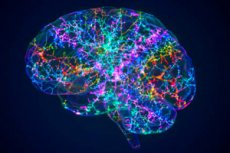
University of California, San Diego engineers have discovered that some brain cells age faster than others, and they are disproportionately abundant in people with Alzheimer's disease. In addition, the researchers observed differences in the aging process of certain brain cells depending on gender: in the cerebral cortex of women there was a higher proportion of "old" oligodendrocytes compared to "old" neurons compared to the cortex in men.
These discoveries were made possible by a new technique called MUSIC (mapping of nucleic acid interactions in single cells), which allows researchers to look inside individual brain cells and map the interactions between chromatin - the tightly folded form of DNA - and RNA. This technique allows us to visualize these interactions at the single-cell level and study how they affect gene expression.
“MUSIC is a powerful tool that allows us to delve deeper into the complex aspects of Alzheimer's disease,” said study senior author Sheng Zhong, Shu Chien Professor of Bioengineering. Gena Lai at the Jacobs School of Engineering at the University of California, San Diego.
“This technology has the potential to uncover new molecular mechanisms underlying Alzheimer's disease pathology, which may pave the way for more targeted therapeutic interventions and improved patient outcomes.”
The human brain contains a complex network of cells that communicate and interact in complex ways. In each of these cells, there is a dynamic interaction of genetic components, including chromatin and RNA, that determine essential cellular functions. As brain cells grow and age, these interactions between chromatin and RNA change. And in each cell these complexes can vary greatly, especially in mature cells. However, unraveling the subtleties of these interactions remained a challenge.
The MUSIC technique has come to the rescue, providing an opportunity to look into the inner workings of individual brain cells. Using MUSIC, Zhong's team analyzed post-mortem brain samples, specifically human frontal cortex tissue, obtained from 14 donors aged 59 years or older, some with Alzheimer's disease and some without.
They found that different types of brain cells exhibit different patterns of interaction between chromatin and RNA. Interestingly, cells with fewer short chromatin interactions tended to show signs of aging and Alzheimer's disease.
“Using this transformative technology to analyze single cells, we found that some brain cells are older than others,” Zhong said. He explained that people with Alzheimer's disease had a higher number of these old brain cells compared to healthy people.
Researchers believe this discovery could help develop new treatments for Alzheimer's disease.
“If we can identify dysregulated genes in these old cells and understand their functions in the local chromatin structure, we can also identify new potential therapeutic targets,” said study first author Xingzhao Wen, a PhD candidate in bioinformatics in Zhong's lab.
The study also found sex differences in the aging of brain cells. In the cerebral cortex of women, researchers found a higher ratio of old oligodendrocytes to old neurons. Oligodendrocytes are a type of brain cell that form a protective layer around neurons. Given their critical role in maintaining normal brain function, increased numbers of old oligodendrocytes may exacerbate cognitive decline.
“The disproportionate presence of old oligodendrocytes in the cerebral cortex of women may shed new light on the increased risks of neurodegenerative and psychiatric disorders observed in women,” Wen said.
Next, the researchers will work to further optimize MUSIC to use it to identify factors—such as regulatory genes and genetic circuits—that are responsible for accelerated aging in certain brain cells.
“We will then develop strategies to suppress the activity of these genes or circuits, hoping to slow down brain aging,” Zhong said.
The results of the work are described in detail in an article published in the Nature magazine.

